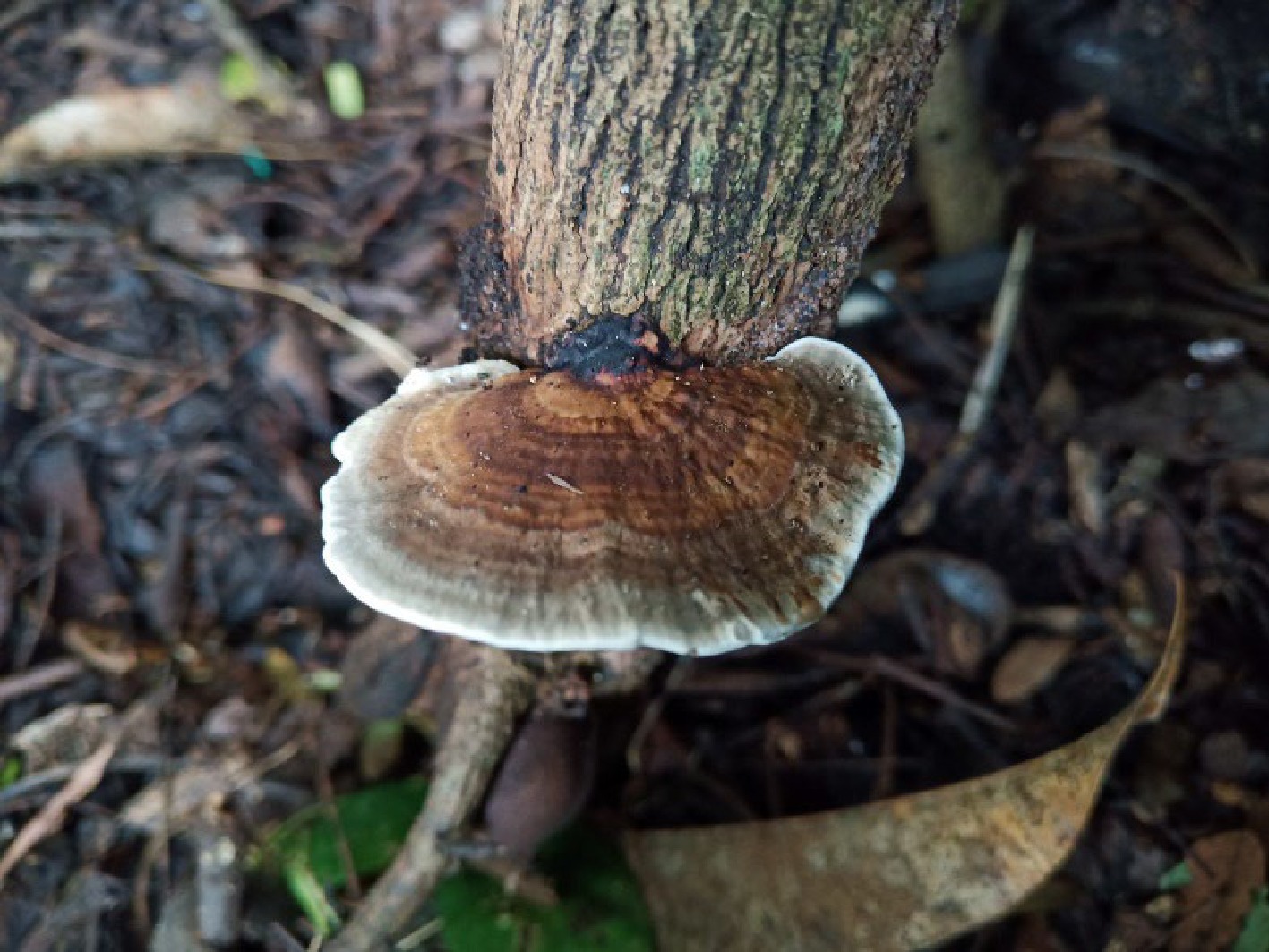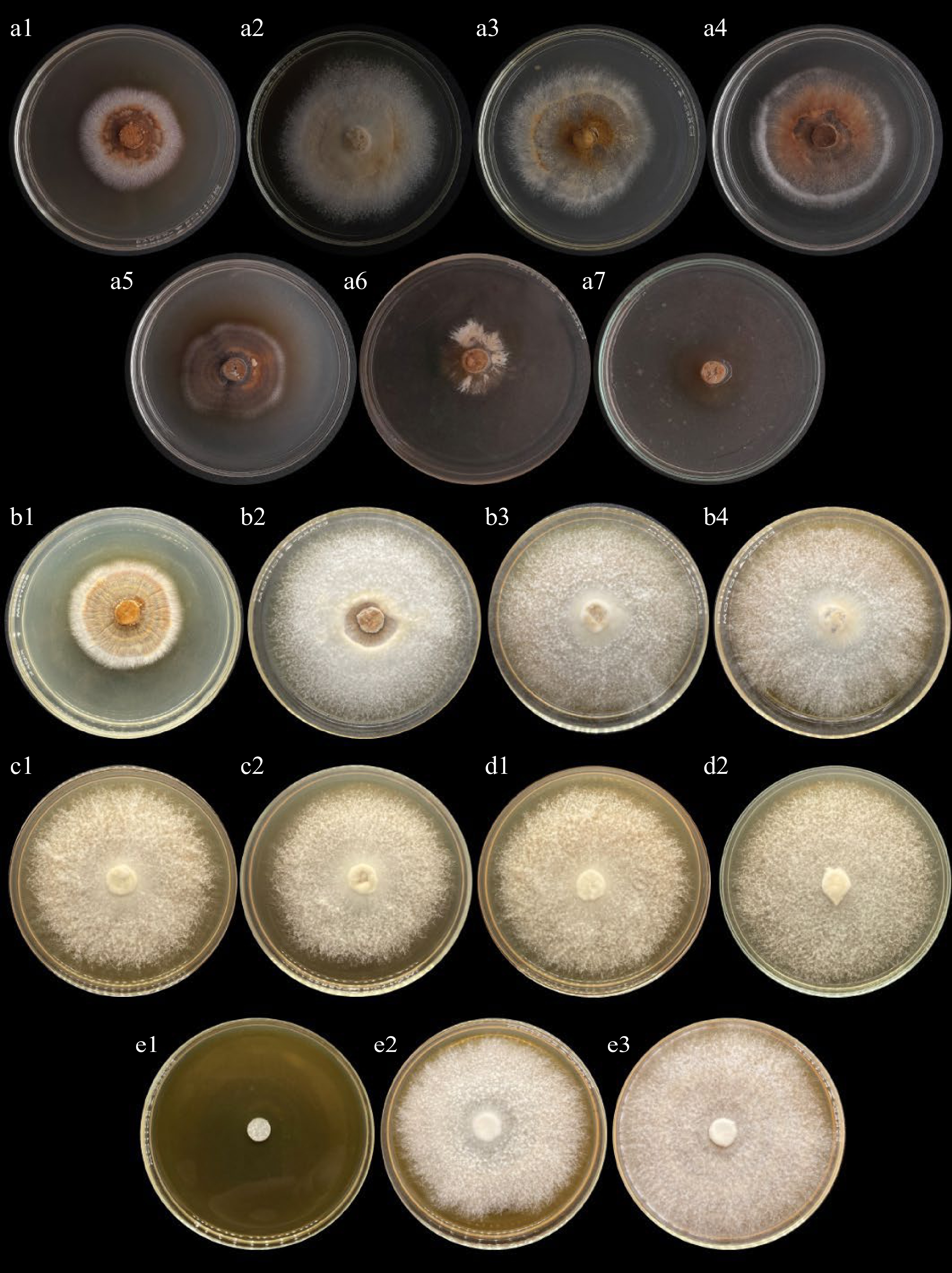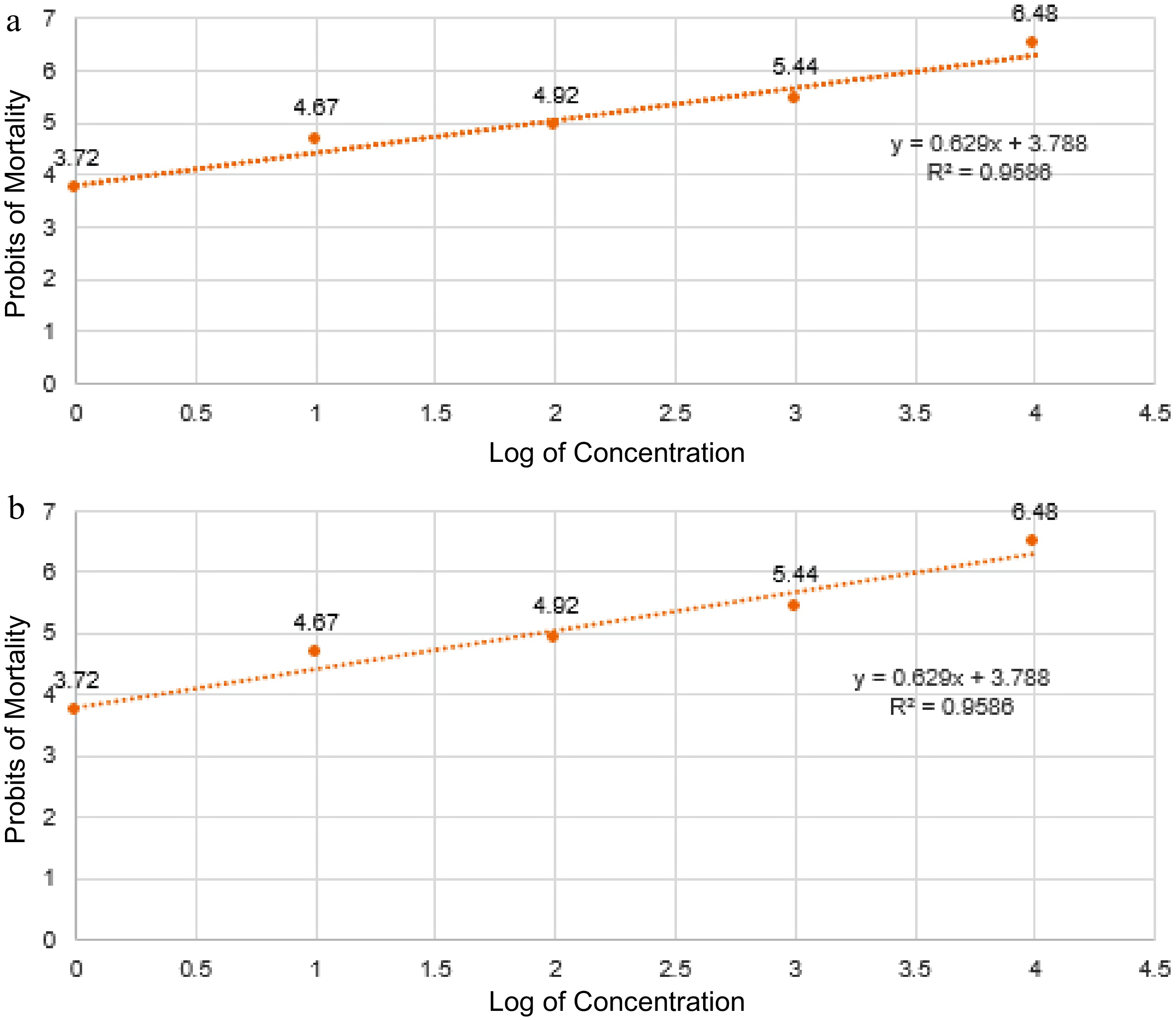-

Figure 1.
Wild fruiting body of Trametes versicolor on the living trunk of Tamarind (Tamarindus indica) tree.
-

Figure 2.
Mycelial growth of Trametes versicolor on different culture conditions. (a) Culture media (a1, SDA; a2, MEA; a3, PDA, a4, CWG; a5, RBDG, a6, PSG; a7, CGDG). (b) pH condition (b1, pH 5; b2, pH 6; b3, pH 7; b4, pH 8). (c) Aeration conditions (c1, Sealed; c2, Unsealed). (d) Illumination conditions (d1, Light; d2, Dark). (e) Temperature conditions (e1, Refrigerated; e2, Air conditioned; e3, Room temperature).
-

Figure 3.
Fruiting bodies of T. versicolor grown in 70% rice straw and 30% sawdust substrate formulation.
-

Figure 4.
Fitted regression line and equation to determine the lethal concentration (LC50) of T. versicolor fruiting body. (a) Ethanolic and (b) methanolic extract in the percentage mortality of brine shrimp nauplii.
-
Growth rate of
mycelia (mm d−1)Mycelial
densityIntrinsic factors Culture media CWG 8.36 ± 0.94ab +++ PSG 3.80 ± 0.57d ++ CGDG 3.93 ± 0.60d ++ RBDG 5.91 ± 0.73cd +++ PDA 8.64 ± 1.18ab +++ MEA 10.27 ± 0.61a +++ SDA 6.64 ± 0.10bc +++ pH 5.0 7.69 ± 0.21b ++++ 6.0 11.91 ± 4.52a ++++ 7.0 14.26 ± 2.11a ++++ 8.0 14.18 ± 2.19a ++++ Aeration Extrinsic factors Sealed 17.45 ± 0.6a ++++ Unsealed 11.51 ± 0.23b ++++ Illumination Lighted 16.97 ± 1.79a ++++ Dark 13.36 ± 6.76b ++++ Temperature Refrigerated 2.00 ± 0.00b No growth Air-conditioned 17.36 ± 1.12a ++++ Room temperature 18.00 ± 0.00a ++++ Means with similar superscripts are statistically comparable from each other using Tukeys HSD and t-test at 5% level of significance. Coconut water Gulaman (CWG), Potato Sucrose Gulaman (PSG), Corn Grits Decoction Gulaman (CGDG), Rice Bran Decoction Gulaman (RBDG), Potato Dextrose Agar (PDA), Malt Extract Agar (MEA), Saboraud Dextrose Agar (SDA). Refrigerated condition (9 °C), Air-conditioned (25 °C), Room Temperature (32 °C). (+) very thin, (++) thin, (+++) thick, (++++) very thick. Table 1.
Mycelial growth of Trametes versicolor with different intrinsic and extrinsic factors.
-
Incubation period (d) Days of primordia initiation (d) Cap diameter (mm) Yield per bag (g bag−1) Biological efficiency (%) 19.70 ± 0.48 36.90 ± 14.76 22.11 ± 3.59 37.68 ± 15.70 7.54 ± 3.14 Table 2.
Fructification parameters of Trametes versicolor.
-
Mycochemicals Reaction Findings Alkaloids Turbidity was formed + Flavonoids Lighter brown coloration* + Glycosidase No reaction − Steroids No reaction − Saponins Frothing formation + Tannins Brownish with lighter green coloration + Terpenoids Brown coloration interface + * Initial color of the extract was brown, thus positive yellow coloration results in a lighter brown. Note: (+) present; (−) absent. Table 3.
Mycochemical analysis of an aqueous extract of the fruiting body of T. versicolor.
-
Extract Concentration
(µg/ml)Mortality
(%)LC50
(µg/ml)Toxicity level* Ethanol 0 0.00e 70.93 Highly toxic 1 16.67de 10 40.00cd 100 53.33bc 1,000 73.33ab 10,000 96.67a Methanol 0 0.00d 74.43 Highly toxic 1 10.00d 10 36.67c 100 46.67bc 1,000 66.67b 10,000 93.33a Means with similar superscripts are statistically comparable from each other using Tukey's HSD and t-test at 5% level of significance.
* Toxicity level was based on the study of Mendoza et al.[28].Table 4.
Cytotoxic effect and LC50 values of ethanolic and methanolic extract of T. versicolor on brine shrimp nauplii after 24 h of exposure.
Figures
(4)
Tables
(4)